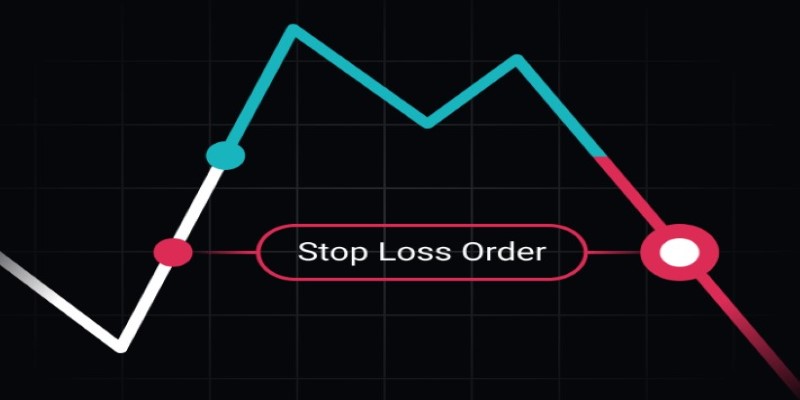Spotting a Rising Wedge: Predict Market Reversals with Confidence
Oct 22, 2024 By Aldrich Acheson
Advertisement
In trading, price patterns often reveal deeper market dynamics than simple price fluctuations. The rising wedge is a key example, reflecting an underlying struggle between buyers and sellers. Initially, buyers dominate, pushing prices higher, but gradually, their momentum weakens. As the wedge narrows, this loss of momentum signals a potential reversal.
The pattern forms when the price makes higher highs and higher lows, but the upward trajectory weakens over time. Traders rely on the rising wedge to predict downturns and adjust their strategies to either avoid losses or capitalize on short positions when the reversal occurs. This guide will explain how to trade it effectively.
What Is a Rising Wedge Pattern?
The rising wedge is a bearish chart pattern that forms when the price of an asset moves upward within two converging trendlines. These trendlinesone connecting higher highs and the other connecting higher lowsslowly move closer together, creating a wedge-like shape on the price chart. While the price seems to be climbing, the formation of this pattern typically signals a loss of momentum among buyers and foreshadows a bearish reversal.
Rising wedges are commonly observed during an uptrend, but they can also appear within a broader downtrend, serving as a continuation pattern. Regardless of where they form, the pattern suggests that the market is losing strength and that sellers are beginning to overpower buyers.
How Does a Rising Wedge Work?
The mechanics of a rising wedge stem from the gradual shift in market sentiment. While the price continues to make higher highs and higher lows, the steepness of the price movement begins to diminish. In essence, buyers are still pushing the price higher, but with less and less conviction. This weakening buying power is a hallmark of the pattern and signals that a reversal may be imminent.

As the rising wedge progresses, trading volume often declines, further indicating that the upward momentum is losing steam. This reduction in volume typically accompanies the narrowing price range within the wedge, suggesting that buyers are stepping back while sellers begin to take control.
The pattern is considered complete when the price breaks below the lower support trendline, at which point a downward breakout occurs. This breakout signals a reversal, and traders often look for additional confirmation, such as increased trading volume, before entering a short position.
Key Characteristics of a Rising Wedge
Several key traits define a rising wedge pattern, making it easier to spot on a price chart:
Converging Trendlines: The pattern is formed by two upward-sloping trendlinesone connecting the higher highs and the other connecting the higher lows. These trendlines converge over time, creating a narrowing price range.
Decreasing Volume: As the pattern matures, trading volume typically decreases. This reduction in volume reflects weakening buyer enthusiasm, making the bearish reversal more likely.
Loss of Momentum: While the price continues to rise, the diminishing slope of the trendlines indicates a loss of upward momentum. The prices inability to maintain its previous pace suggests that buyers are losing control.
Breakout: The most critical moment in a rising wedge is when the price breaks below the lower trendline. This breakdown is the signal traders wait for, as it confirms the bearish reversal.
Risk Management: Traders often place stop-loss orders just above the pattern's highest point to protect themselves from potential false breakouts, where the price momentarily reverses upward before continuing downward.
How to Trade the Rising Wedge Pattern?
Trading the rising wedge requires a disciplined approach, as timing the breakout is crucial to success. Heres how traders typically approach it:
Identify the Pattern:
The first step is recognizing the rising wedge on the chart. This means spotting the two converging trendlines and observing the behavior of the price and volume during the patterns formation.
Wait for Confirmation:
Before entering a trade, traders wait for the price to break below the lower trendline. This breakout is the confirmation needed to act on the pattern's bearish signal. Volume often increases during this breakdown, which serves as further validation.
Entering the Trade:
Once the breakout is confirmed, traders typically enter a short position. The ideal entry point is at the breakout level or immediately after a strong confirmation candle closes below the lower trendline.
Setting Stop-Loss Orders:

Risk management is vital when trading any chart pattern. In the case of a rising wedge, a stop-loss order is often placed just above the most recent high within the pattern. This ensures that losses are minimized if the price reverses unexpectedly.
Profit Targets:
The profit target for a rising wedge trade is generally set based on the height of the pattern at its widest point. By subtracting this distance from the breakout level, traders can estimate the potential downside movement. Fibonacci retracement levels can also be used to fine-tune exit strategies.
Managing Risk:
Traders should always keep an eye on other technical indicators, such as the Relative Strength Index (RSI) or Moving Average Convergence Divergence (MACD), to validate the trade. Using these indicators in conjunction with the rising wedge can provide a clearer picture of the market's direction.
Conclusion
The rising wedge is a powerful pattern for traders looking to capitalize on market reversals. Its ability to signal a bearish shift makes it an essential tool in technical analysis. By understanding its characteristics, how it forms, and how to trade it effectively, you can improve your trading strategy and anticipate market moves more accurately.
While the pattern is relatively straightforward, its important to use additional technical tools and risk management strategies to confirm the setup and protect your capital. Trading is never without risk, but with the right approach, the rising wedge can offer significant opportunities for profit in stock markets.
Advertisement
-
 Banking Feb 18, 2024
Banking Feb 18, 2024Best Credit Card Perks Offered Today
Discover the best credit card perks to help you save money on your purchases and unlock amazing rewards. Find out which one works best for your specific needs!
-
 Mortgages Oct 13, 2023
Mortgages Oct 13, 2023Student Loan Repayment: Best Plans and Other Resources
Are you struggling to pay off your student loans? Check out this blog post for an overview of the best repayment plans and resources available to help make loan payments more manageable. Learn how to make the most of your financial situation today!
-
 Investment Nov 07, 2023
Investment Nov 07, 2023Are You Eligible for Life Insurance?
Take a few moments to understand the ins and outs of life insurance with this comprehensive guide. We'll cover eligibility criteria, benefits, and more — get all the facts before making decisions!
-
 Investment May 18, 2024
Investment May 18, 2024The Importance of Price Action in Trading: What You Need to Know
Are you curious about price action in trading? This article breaks down the concept in simple terms, covering what it is, how it works, and why it matters. Dive into the world of trading patterns and strategies with ease.
